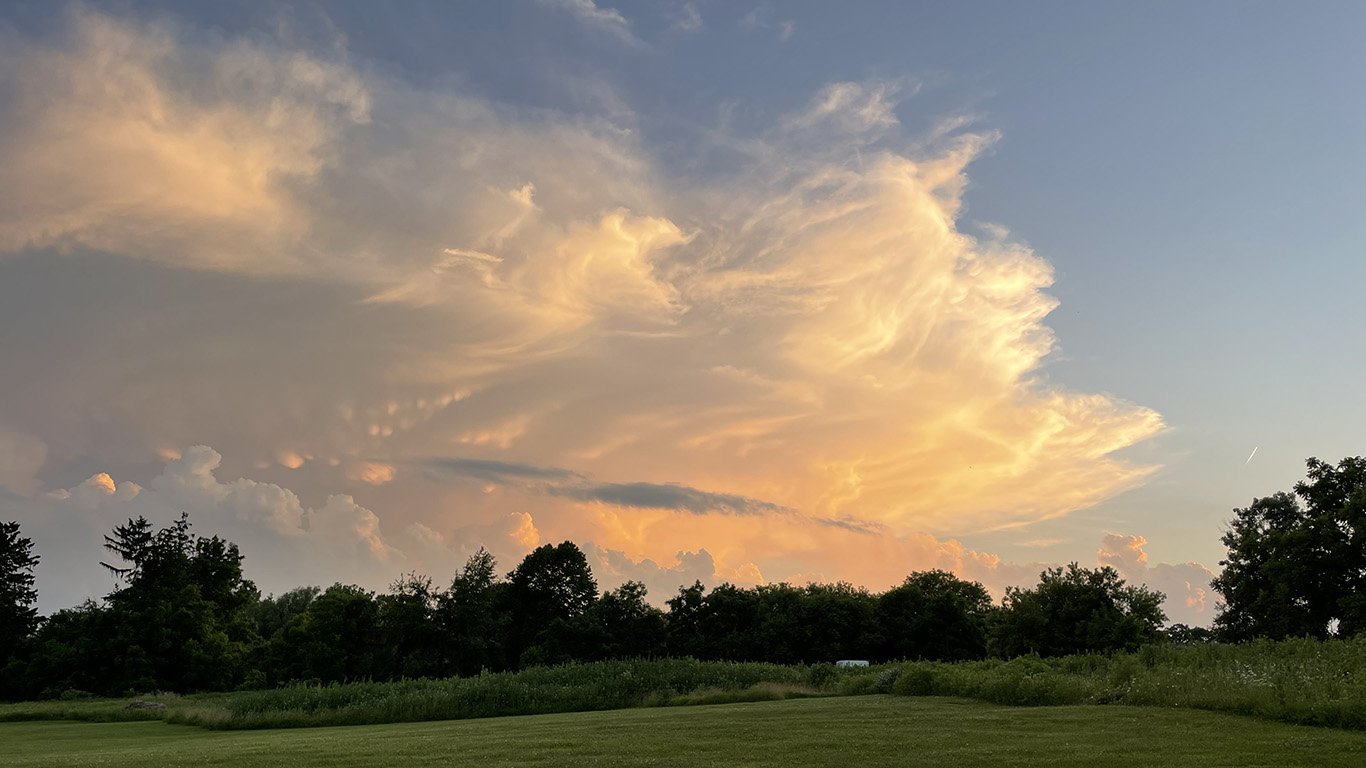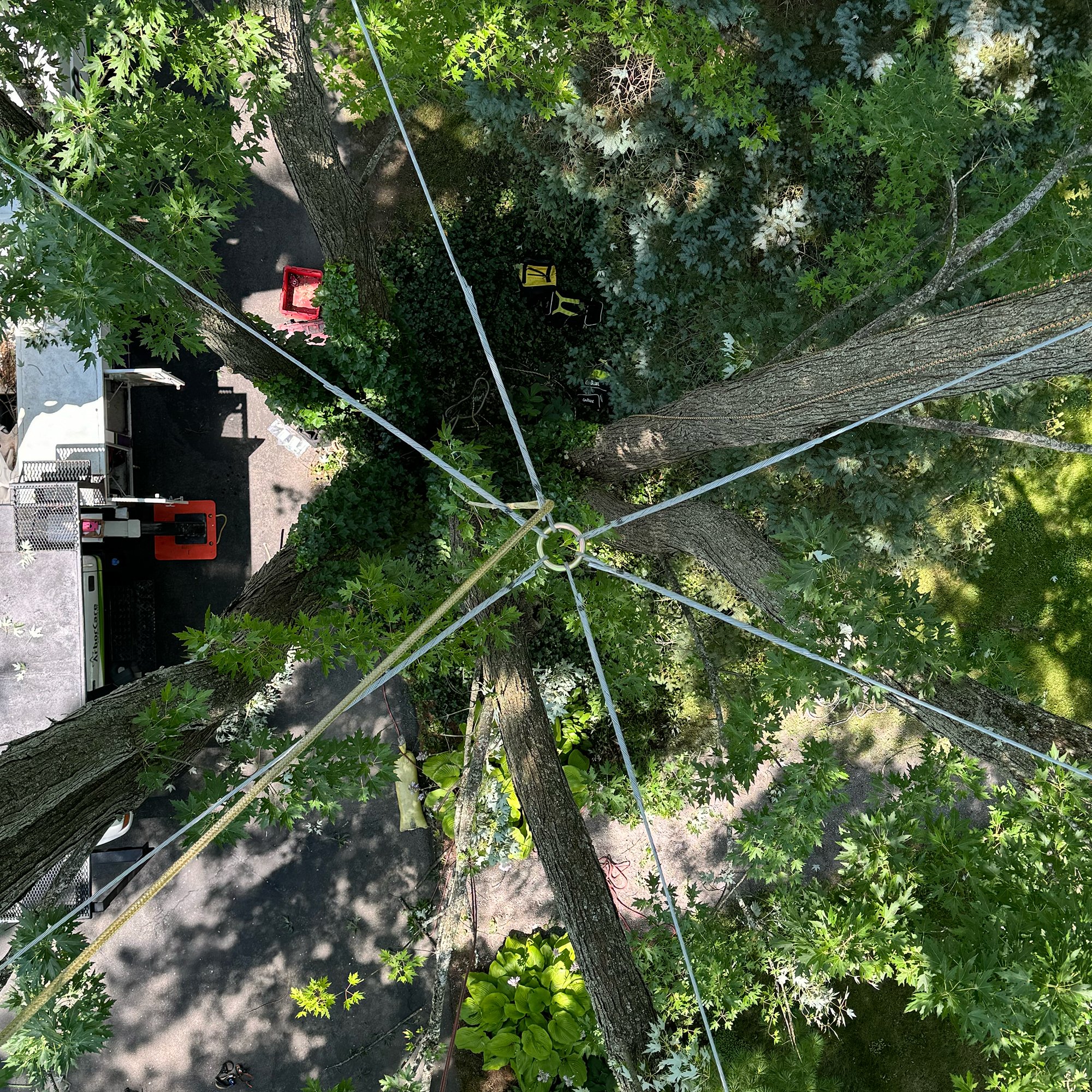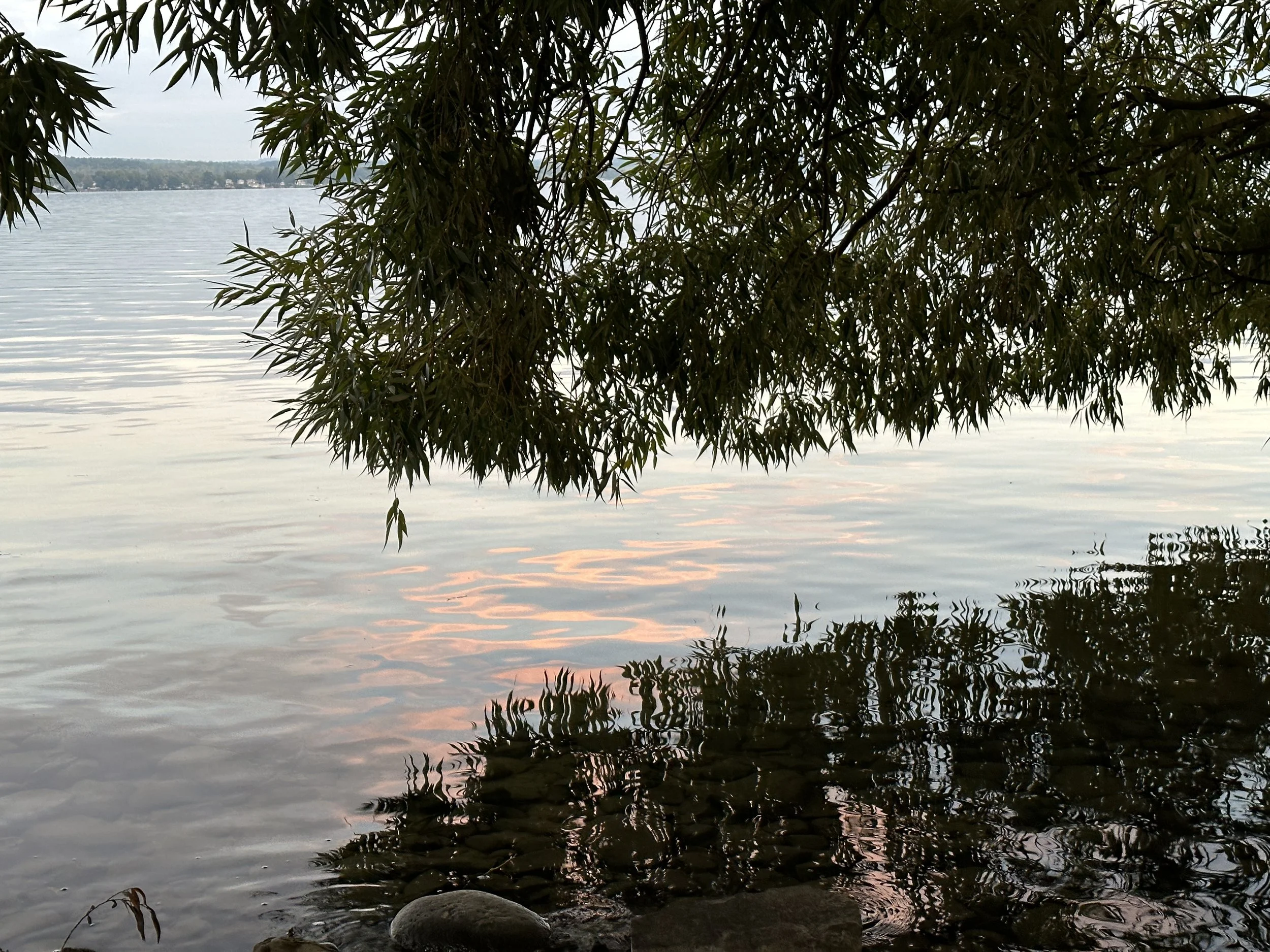
Summer in Upstate NY
We've had a blazingly hot, dry, and stormy Summer that’s been tough on people, pets, and plants. When we talk about Summer Tree Care rolling into Fall, we think of water, soil, mulch, fungus, and more.
Each year plays out differently around our Finger Lakes Region, but it's important to keep your trees in mind during a dry spell in the Summer. Below are some things to consider.
-
WATERING:
Generally, mature trees need about 5 gallons for every 1 inch of trunk diameter a week. The species, size, age, location, soil type, and other factors influence how much water any individual tree needs. Our regional species have adapted to handle cold and hot spells but there are some signs to look for if you're worried about the heat. If you see these signs (‘the canopy’ and ‘soil check’), reach out for our Certified Arborist to stop by with their expert opinion as many signs of water deficiency and tree diseases present similarly.
(Newly planted trees and saplings require regular, slow, deep watering.)
-

The Canopy:
A tree's leaves (or needles) are a quick indicator of many issues and will present dehydration by wilting, shrinking, curling, drooping, turning yellow/brown (needles may wilt or tint orange), and may even start to drop off the tree. These issues could also be a sign of overwatering, so be sure to check in with a Certified Arborist for best practices for your specific tree care. Read more about clues in the canopy.
-

Soil Check:
Crumbly dirt and dry/crispy grass are good indicators to explore your soil. Dig about 4 to 6 inches under the surface near the base of your tree (take care and try to avoid hitting roots) and assess the deeper soil. Is it dusty, or dry feeling to touch? If so, your tree would likely benefit from watering.
ABOUT SOIL: We always recommend a regular soil amendment schedule to support your trees for all seasons. This can be especially beneficial in recovering from, or enduring a dry spell when the microbes in healthy soil may die off. Let us know if you're interested in our proprietary soil amendment, created specifically for the soil our Finger Lakes and Rochester area trees and landscaping live in.
Tips for Watering:
Slow, deep watering from a soaker hose or, for smaller trees, a tree bladder or tree watering bag*, encourages roots to grow downward which helps the tree to be more resistant to future droughts.
Timing matters. Early morning or late evening watering minimizes evaporation.
Avoid overwatering; less frequent, deep waterings are best.
Sprinklers are NOT a tree's friend. Overhead watering that coats leaves, branches, or the trunk can encourage the spread of fungus and disease, as well as potentially result in scorching of leaves as water droplets magnify the hot sun.
*Ask us about the Tree Diaper, a newer watering bladder that is especially effective!
MULCHING:
Adding mulch around your trees can help with overall health and water maintenance (and make mowing easier!).
Mulching can help retain moisture and regulate soil temps for any size/age tree – but HOW mulch is applied matters:
Deeper isn't necessarily better: a two (2) to four (4) inch layer of mulch helps preserve moisture, suppress weeds, and regulate soil temperature.
Do the tree donut: (Don't create a volcano – everyone likes donuts, but not volcanoes!) Keep mulch a few inches away from the tree's trunk to prevent rot and allow water to funnel down to the root bed. [Right: ‘donut’ mulching with tree watering bladder on top.]
Spread mulch out to the drip line (the edge of the tree's canopy).
Consider organic mulches to help add nutrients to the soil: wood chips, bark, or shredded leaves work well.
Other Tree Care Considerations:
-

PRUNING
Summer pruning of dead or damaged branches promotes tree health and can reduce potential hazards to people, pets, and structures. It is also a good time to use pruning to inform the future shape and growth of trees. Pruning is a great way to increase the longevity of your trees by ensuring airflow in the canopy which can help discourage fungus and bacteria. There are some species we will not prune in the Summer, including fruiting trees and Oak which is susceptible to Oak Wilt and other pathogens in warmer weather.
-

SEVERE WEATHER PROTECTION
In the past few seasons, we've experienced an uptick in high winds, hail, heavy rainfall, and microbursts around the Rochester and Finger Lakes Regions. Trees with weak unions (connections between sections of the trunk, or branches and the trunk), or heavy overreaching limbs, are more susceptible to storm damage. A Certified Arborist may recommend cabling and/or bracing to help support the structure of a tree. Pruning, or trimming, for weight reduction of limbs can also help reduce the risk for future failure during weather events.
-

PESTS & DISEASES
No matter the season, being on the lookout for pests and diseases will help your tree live a longer, healthier life. Issues like magnolia scale, woolly adelgid, black knot, and needle blight are common around our Upstate homes. Inspect bark, branches, and leaves for these issues as well as aphids, caterpillars, and other pests. If you notice sawdust, borer holes, leaves dying back, unusually chewed leaves, or weeping sap, have a Certified Arborist check the damage. Catching and treating insects or diseases promptly can significantly increase your tree's chance to bounce back to health. Learn more about our Plant Health Care (PHC) program.
-

Your landscaping is more than just trees!
If you'd like a landscape inspection to help plants and trees recover and prepare for Fall, give us a call and one of our arborists will stop out free of charge to assess the health and long-term wellness of your hardy plantings.
Need assistance?
Contact our team of professional Arborists to get additional information and request a quote:



